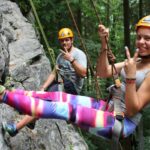Approach To Conquering Lead Climbing Fear: A step-by-step approach to conquering lead climbing fear: When today’s guest contributor, Josh Thompson, approached us with this piece about dealing with fear, I (Missy here today, hey guys!) was on board right away. As a person who a) has a terrible fear of lead climbing, b) is even more afraid of belaying than climbing, and c) has had a lot of negative experiences with climbing in a short period of time, his approach of focusing on belayer competence, rather than the sink-or-swim, take-a-bunch-of-whippers-and-you’ll-feel-better school of thought that is the common wisdom just clicked with me. Some of it may surprise you, but keep an open mind, and read on! Here’s Josh:
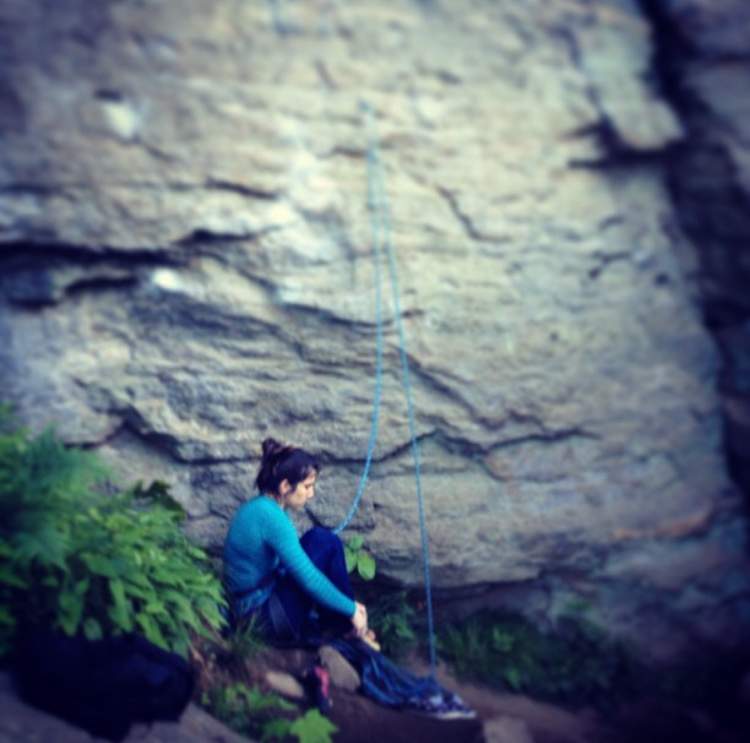
Feeling the nerves as you get ready to climb? You don’t have to!
Have you ever tried to reason yourself out of fear? There you are, on the wall, ready to make a move, and suddenly you are flooded with doubt and what-ifs. No matter how the climb unfolds (i.e. you send, you fall, or you take) you’re enduring this fear for at least some of the climb. We’ve all been there, but here’s the thing – if you wait until you become consciously aware of fear to deal with it, you’ve missed your opportunity. Approach to conquering lead climbing fear
Here’s my gutsy proposition: The only way you can conquer fear while climbing is by doing NOTHING that causes fear.
You may ask. But how can that be true? Doesn’t trying to get over a fear of falling mean taking falls, feeling fear, and facing up to it? That’s not exactly how it works, here’s why:

Happy calm belayer = happy calm climber
Every time you climb while anxious, you teach your brain that climbing = anxiety. Your brain (especially your subconscious brain) is an attentive thing and doesn’t respond well to you simply wishing it behaved in another way.
Find out Tips to trad: a beginners guide.
You can retrain your brain only via experience.
The attitude you had on the last twenty routes you climbed will probably be the same attitude you have on your next climb. Break this cycle by building a long chain of POSITIVE experiences while climbing. Forcing yourself into uncomfortable, anxious situations counts as a negative experience, so you must avoid putting yourself in a situation where you’ll feel that fear.
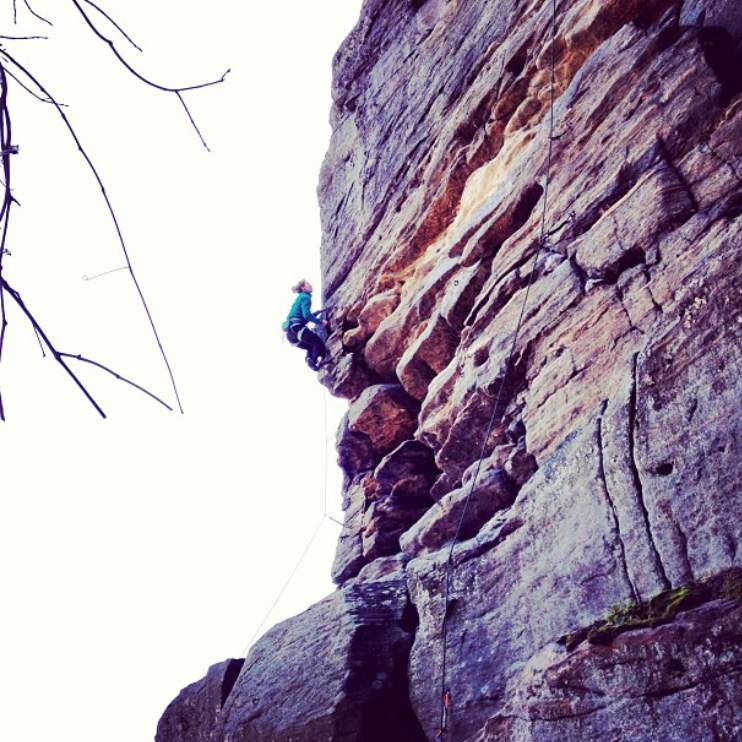
Inches Outside Your Comfort Zone
Conventional wisdom about training to lead climb will have the climber take falls over and over again in an attempt to inoculate themselves to this fear. This all-or-nothing approach is not just misguided, it is harmful. What I am suggesting is incremental progression to find the edge of your comfort zone, and then step ever-so-slightly beyond it, and practice in this place until it no longer feels outside of your comfort zone. Then, step ever-so-slightly beyond your comfort zone, and do it again.
The following progression allows you to build confidence and move from “I have a lot of fear around falling” to “I have so much experiential proof that my belayer can safely catch me, I rarely feel fear in any situation.” The best part is, that this can all be done without ever going very far outside your comfort zone.
As you start this training, keep the following two ideas in mind:
1. Your belayer is the most important piece of the puzzle. You should not even be taking big falls if your belayer can’t handle it, so we’ll focus on becoming (and helping your partner become) an amazing belayer whose judgment you can trust.
2. You and your climbing partner should both push yourselves equally hard. Empathy matters and if you, as a belayer, are uncomfortable when your climber is above a bolt, it’s likely that you will also be uncomfortable when you are the climber in that same position. So working on increasing your comfort with both roles is equally important.
The 5-Step Progression
This progression has worked for dozens of climbers, with a wide variety of experiences and levels of fear, and it will work for you. You will soon be having more fun, and climbing better and harder than you were before.
1. Belayer: Learn to Give a Soft Catch
A belayer uses a “soft catch” to prevent the climber from being uncomfortable and unsafe when falling. When you are driving through town and want to stop, do you slow down gradually, or do you slam on the breaks? As a belayer, you want to slow your climber down gradually (more detail on this in an upcoming post).
2. Climber: Learn to Identify a Soft Catch
Identifying a soft catch is the foundation to building trust in your belayer. If you can differentiate between a soft and hard catch, you can identify bad belayers (who keep spiking you and don’t stop even if you ask them to)
and you can find good belayers (who will at a minimum, give you soft catches). This differentiation is also helpful for your belayer because you can provide them with quick and immediate feedback on how good their catch was.
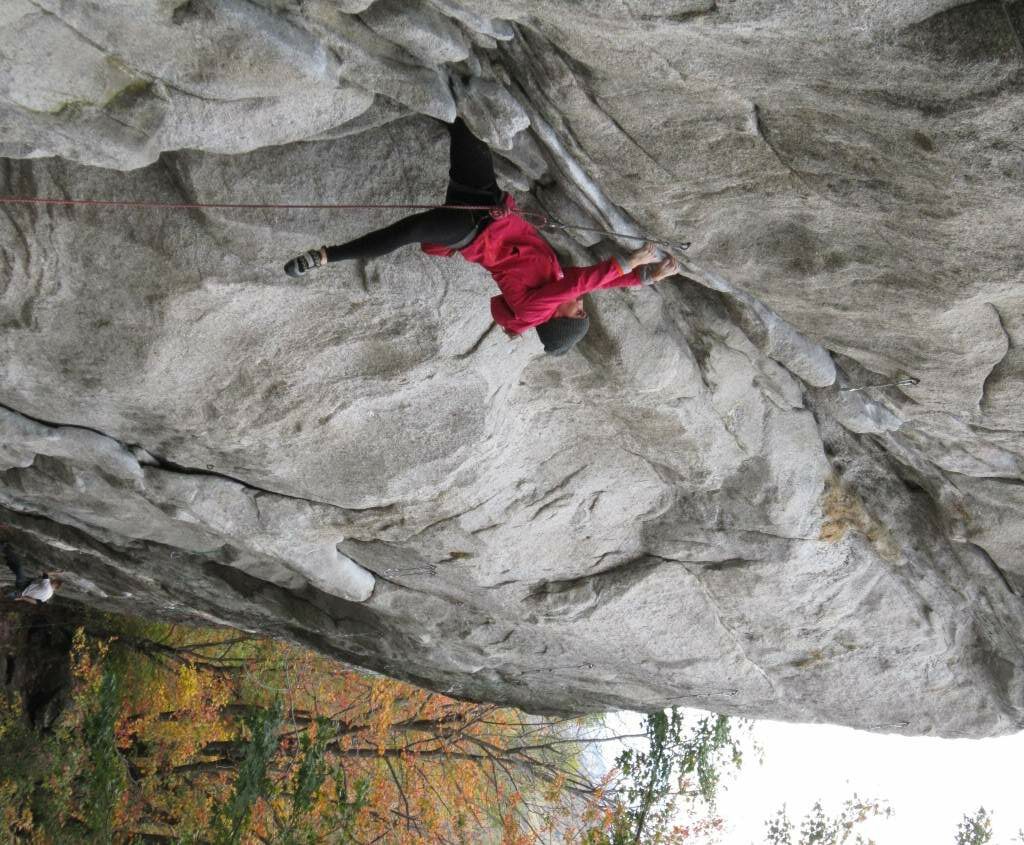
3. Climber: Take Small, Progressive Falls
Acquire the aforementioned “soft catch” skills by climbing up to the third or fourth bolt at your gym, clipping it, and then down-climbing a move or two, so the bolt is above your head. Now you’re on a little tiny top rope and should feel quite safe. (If you don’t feel safe, down climb some more so the top rope is even more apparent). Start taking falls here until you and your belayer have figured out the “soft catch” thing. It may take five or ten falls, but I promise this is the most worthwhile activity you can do to build trust and eliminate fear.
Once you and your belayer are feeling good with falls while below the bolt, climb a move or two higher, and do it again. Make sure that you are getting soft catches throughout! If the belayer ever fails to give a soft catch, let him/her know, and try again.
Keep this incremental progression going for as long as you feel comfortable and relaxed. If at any point you feel uncomfortable, or anxious, or lose your interest, end your training. Remember that to train your brain to stop feeling anxious about falling, you need a long chain of POSITIVE experiences. Your mental willpower is just like a muscle – it wears out. So don’t try to do too much in a single day.
4. Switch Roles Often
Take turns as climber and belayer so both partners have the chance to practice falling and providing soft catches. The belayer needs to be intimately aware of the fear the climber feels, and vice versa. Again, this is why it’s critical that no matter what difference in ability may exist between climber and belayer, they must both be equally talented belayers.
5. Ask For and Give Feedback
After a fall, ask your climber, “Did that catch feel OK?” and help your climber identify any instances of fear on the wall. An attentive belayer who wants their climber to feel comfortable while climbing is tremendously valuable. This way your climber can focus on climbing, and you can help them keep growing in confidence.
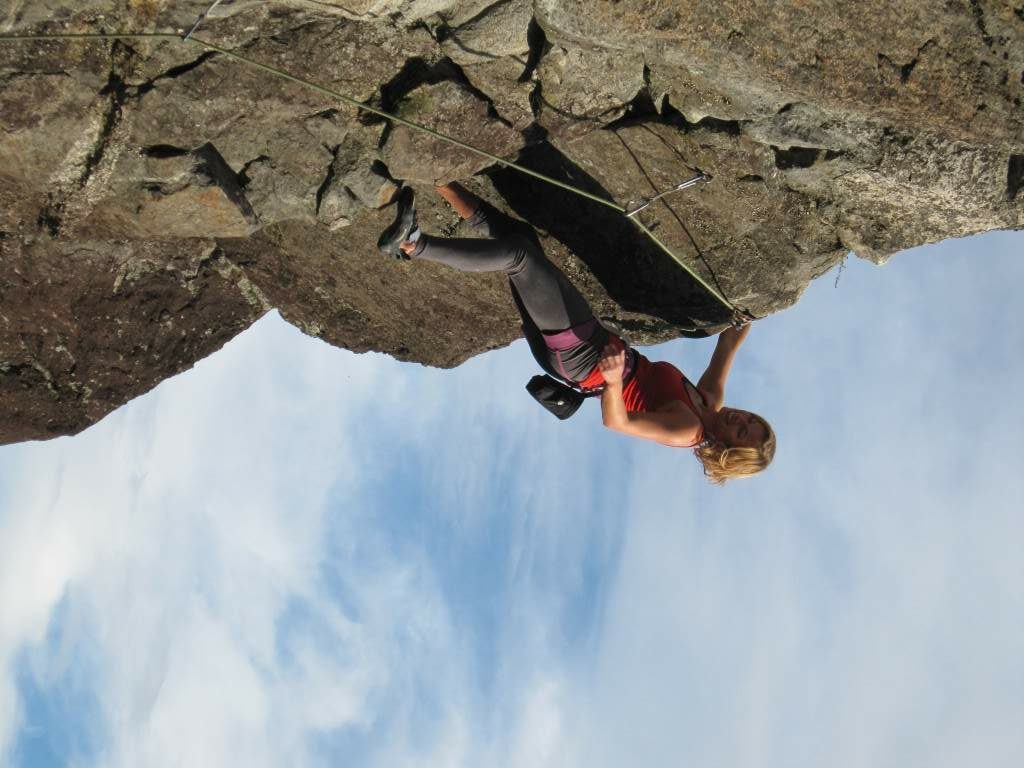
When you feel confident in your belayer, climbing is way more fun!
Frequently Asked Questions:
How long should this all take?
One “session” of practice, where you each take maybe ten falls, is more than enough to start seeing the benefits but you probably don’t want to spend a whole climbing session falling, so spend fifteen minutes practicing falls at the beginning of your session, while you’re warming up. Then, pick up where you left off when you climb again. In two or three sessions, you’ll see big changes.
Should I practice only on overhung terrain?
No. Everything above applies to all kinds of terrain – if you fear falling on vertical or even slightly slabby terrain, run through the above system on vertical or slightly slabby terrain. (I promise it’s safe to fall on the slab – just start small, and build from there.)
What if I don’t have just one climbing partner?
Try to get all of your climbing partners on board with trying hard and taking falls and getting awesome catches. If you can get them on board, you’ll have a big group of great belayers to pick from. Just keep in mind, when you start climbing with a new/unproven belayer, your confidence might evaporate until you build that trust; I’ve built a high degree of trust with a regular climbing partner of mine, but almost every time I start climbing with a new climbing partner, my confidence plummets, along with my climbing ability.
In Conclusion
Learning to climb with confidence is a slow, incremental process of building trust and competence as a belayer with a climbing partner. Communicate with your belayer, and when you encounter a scary situation in the future, you will know how to work through that fear in a healthy, safe, and incremental way.
We all experience fear while climbing, and as long as we stick with the sport, we will find ourselves in new and intimidating situations. The solution is not to convince ourselves that we must have blind confidence and climb fearlessly, it’s to work with our belayers, take falls in a progressive manner, and make sure we’re safe.
The sheer joy of movement lies just beyond the edge of this fear. Whether you climb 5.8, or 5.14, this joy can be yours, with just a few hours of intentional work. You will reap the returns of this investment for the rest of your climbing career.
Thanks, Josh!
Josh Thompson is a guest contributor to Crux Crush who loves climbing, books, boxed wine, and his wife. (But not in that order.) He teaches climbing to climbers in Colorado and from behind a keyboard at www.joshdthompson.com.
Photo Credits: All our own photos! Follow us on Instagram to keep up with our adventures.




